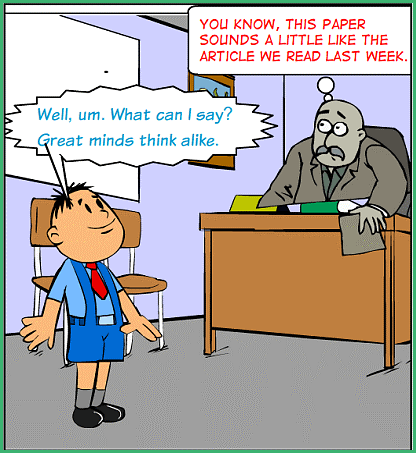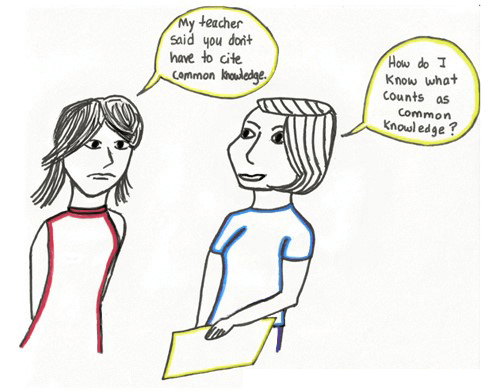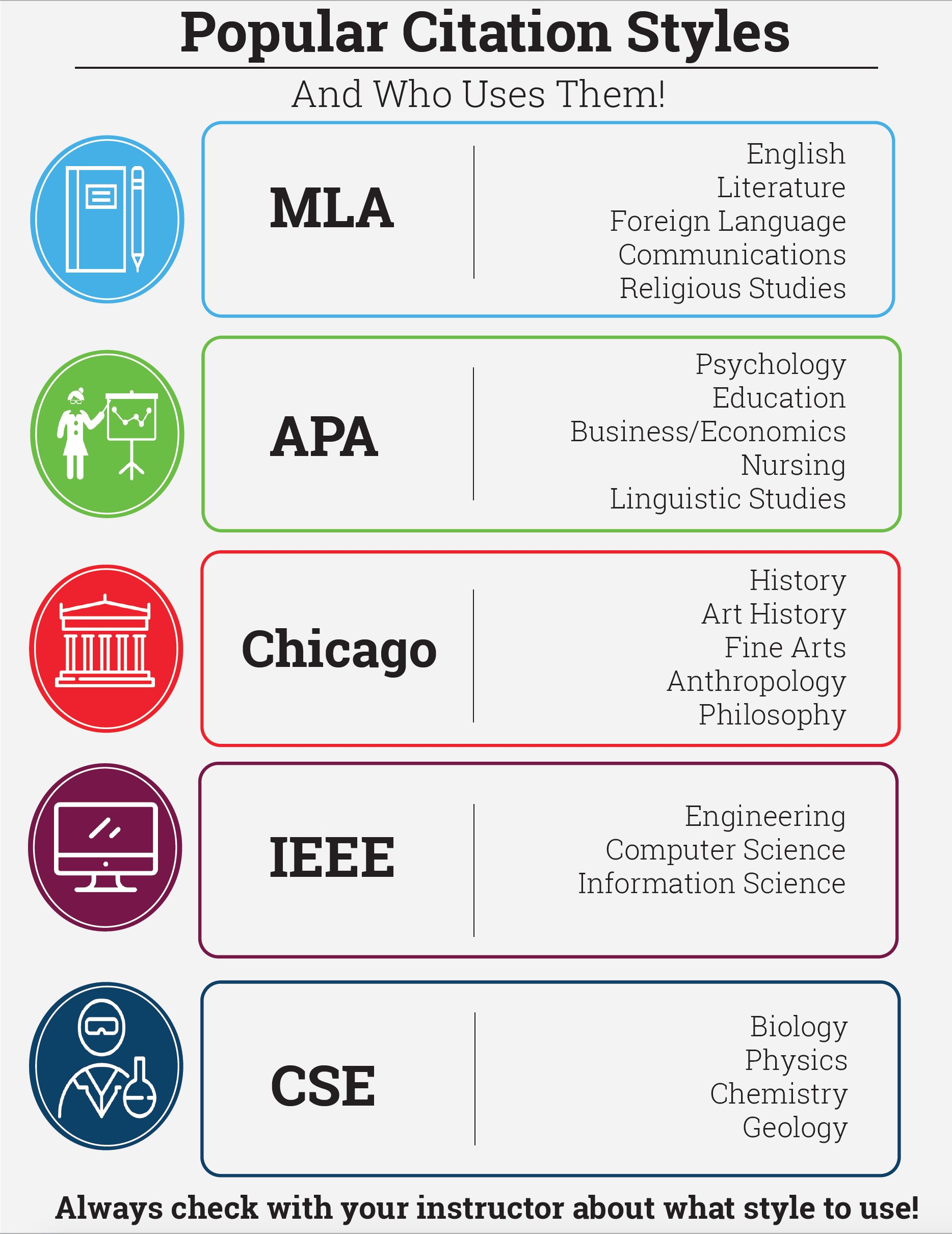9 Smart Tips for Avoiding Plagiarism
The Ultimate Guide to Understanding Plagiarism
A well-researched article is not just about collecting information and arranging them in order of sequence.
You need to keep a lot of things in mind – from properly researching a topic, collecting relevant information, arranging them in a proper format, to make sure that you do justice to the topic.
However, a single act of plagiarism can ruin your entire effort. You might not be able to understand when you unknowingly used the ideas of another author without giving proper credit to them.
While this type of mistake is frequent among new researchers and writers, even experienced professionals tend to commit such an act, either knowingly or unknowingly.
 Credit: istock.com/kbeis
Credit: istock.com/kbeis
Is it plagiarism?
There are professional and academic instances which undoubtedly constitute plagiarism. This includes –
- Buying, borrowing or stealing a paper (whether physical or online);
- Hiring or contracting sites which offer to write your paper; and
- Copying large portions of text without giving proper credit to the original author.
Then there are instances which are debatable as to whether it constitutes plagiarism or not. This includes:
- Building on the idea of another author without giving proper credit;
- Using the words of other sources too closely during paraphrasing.
But whatever the situation, all these are identified as acts of plagiarism, irrespective of whether it is intentional or unintentional, and mandates severe penalty to the offender.
A survey conducted by Donald McCabe of Rutgers University revealed that 38% of the undergraduates admitted themselves of copying or paraphrasing portions of a text from another source without providing a proper footnote.
 Source
Source
Fortunately, there are some simple tips and tricks that can help you protect your reputation as a writer by avoiding plagiarism in your content and show you the way to success.
Who is responsible for preventing plagiarism?
It is not the sole responsibility of the writer to prevent plagiarism in his writings, especially when he is an amateur in developing unique content all on his own.
The instructor equally plays a part in preventing any occurrence of plagiarism in the content by providing proper instruction.
Writer Responsibility :
It is the responsibility of the writer to understand the code of professional ethics and academic integrity.
Not being aware of the rules, or running short of time, or misinterpreting the rules or submitting the wrong draft are not acceptable excuses for plagiarizing content.
The writer should take the responsibility of submitting his research essay or thesis diligently so as to uphold the academic integrity.
 Credit: Istock.com/Doloves
Credit: Istock.com/Doloves
Instructor Responsibility :
The role of the instructor is to ensure that the writer follows both the general as well as the specific guidelines for writing a research paper.
If any deviation is found in abiding by the guidelines it must be immediately reported to the writer and necessary measures should be taken to correct such mistakes.
The instructor should identify incidents of cheating or plagiarism through plagiarism checker tool and immediately report it to the higher authority if any such unethical activity is found from the content.
Effective Tips for Writers to Avoid Plagiarism
Although most writers, especially students, do not intend to plagiarize their content, the consequences remain the same. The most effective way to avoid such mishap is by planning the writing process well before putting pen on paper, understanding the source material and acknowledging them wherever required.
Some of the effective tips that can help writers submit a plagiarism-free and unique content are as follows:
1. Know what the term “plagiarism” implies
Different universities and academic institutions define the term “plagiarism” in their own words and their own sense of understanding.
But all these definitions sum up to portray the same meaning. They imply copying or stealing of the original content of an author and claiming it to be your own without giving credit to the original developer is plagiarism.
There are times when the writer unintentionally copies the content of another person simply because of mere carelessness. So, it is necessary to know the various forms of plagiarism and the context in which they occur to try and restrict the occurrence of such an unethical activity.
 Source
Source
Of the above, these are the most frequently committed by students:
- Direct plagiarism – It is when the idea of another author is taken word-by-word without citing the source properly.
- Mosaic plagiarism – This refers to the quoting of the work of another without giving quotation marks. It can also be that some of the words are replaced with synonyms while keeping the overall structure of the sentence same as before.
- Self-plagiarism – This occurs when you submit your previously submitted assignment as a part of your current work.
- Accidental plagiarism – It occurs when you have not cited or misquoted or paraphrased without giving credit to the original developer.
Therefore, keeping a check on the above mistakes will surely help you to avoid a black tag in your academic or professional career.
2. Identify whether something is “common knowledge”
Any fact or incident is considered as “common knowledge” if it has been used more than four times in any credible sources.
Moreover, something is referred to as “common knowledge” if you the writer knows that the readers can easily find the facts from general reference sources.
 Source
Source
For example the fact that Christopher Columbus sailed to San Salvador in 1492 across the Atlantic has become “common knowledge”.
The following two simple questions can help you clear any doubt in your mind about the fact being “common knowledge” or not.
- Were you aware of such information before you read about it?
- Did you develop this idea or information in your own mind?
But do not take chances if you are not sure that a text that you have included in your content is “common knowledge” or not. Always cite the source in such a case.
If the citation turns out to be unnecessary you will be informed by your instructor. You will not get discredit for the same. At least you can avoid possible plagiarism issues.
3. Cite your sources properly
One of the effective ways to avoid plagiarism is by citing sources that you refer to while writing an assignment. Giving proper citation will provide all the necessary information about the author and their work.
Every institution lays down a set of guidelines for writing an article or essay which clearly provides the manner in which a source can be properly cited. The popular citation styles include –
- Modern Language Association (MLA) style used mostly for texts involving languages, art, and literature.
- Chicago Style used in historical writing.
- American Psychological Association (APA) style which is used for texts involving social and behavioral sciences.
- Council of Science Editors (CSE) style referred to for science-based texts.
Based on the type of research paper you are writing, you need to choose the citation style. You can also seek help from your publisher, editor or instructor regarding the citation style to be used.
 Source
Source
It is a popular misconception among writers and students that disclosing about the sources referred will create a negative impact on the reader. But in reality, it actually creates a positive impact by –
- Showing that the writer has made efforts to add to the ideas and opinion of another writer.
- Highlighting the ideas and opinion of the writer and those that are borrowed from others.
- Indicating that the content of the writer is backed by sufficient external evidence.
When in doubt always cite the source to be on the safer side.
Example:
“Every writer has his or her own intellectual identity, though most ideas inevitably come from outside sources. A responsible use of sources recognizes that identity and distinguishes clearly between what you think and what the sources think. It is no sin to accept another person’s idea…. But you must interpose yourself between the sources and your writing, thus making other peoples’ ideas your own through a process of critical scrutiny.”—Ed White and Lynn Bloom (qtd. in an email from Ed White, citing the book he and Bloom edited, Inquiry, Prentice Hall, 1993, p. 445).
4. Be cautious while using quotes
Quotations are the exact words borrowed from the sources to back up an argument or idea. Citing a quote is different from citing a text that is paraphrased.
The former includes, in addition to the name of the original author, the page number or the paragraph number from where it has been borrowed. Besides, state your intention for using such quotation and the significance it plays in your content.
 Credit: istock.com/bagotaj
Credit: istock.com/bagotaj
Here are a few tips to help you use quotations effectively in your content without the risk of falling prey to plagiarism.
- a) Mention the name of the source author in the same sentence as the quote.
- b) Include the date when the work was published and also superscript numbers to the quoted text.
- c) Put the entire text within quotation marks or as per the style guide under which you are writing.
- d) Quote only the relevant content. If a short phrase is enough to serve your purpose do not go for quoting an entire passage.
- e) To shorten the length of a quote use ellipsis points (…) to indicate that a certain portion of the quote has been omitted. If you omit a source in between complete sentences, take the help of terminal punctuation in between ellipses.
- f) If you intend to add some words to an already existing quote, use brackets to distinguish it from the original content. But make sure that it does not skew the actual meaning of the sentence.
- g) Choose quotes that will have an argumentative impact on your article.
Unnecessarily crowding your content with too many direct quotes would imply that you have nothing much to say. Moreover, it will interfere with the style guide you are following for your writing.
5. Learn the art of paraphrasing
Paraphrasing is an art. Those who know how to effectively paraphrase content can easily avoid plagiarism issues without much effort.
Paraphrasing material from an external source will enable you to use the content of those sources without openly submitting to the ideas or worrying about citing the source correctly.
 Credit: istock.com/ekapanova
Credit: istock.com/ekapanova
The key to paraphrasing successfully will depend on your familiarity to such content.
The following additional key considerations will help you paraphrase successfully –
- a) Give credit to the source somewhere in the paraphrase (Example: According to Ernest Hemingway, …).
- b) If you are having trouble summarizing, develop your paraphrase by relying on your own idea and understanding of a passage.
- c) Do not use more than two words consecutively from the source content. Otherwise, you will have to quote the text.
- d) Make sure that you alter the structure of the sentence from where you have collected such information.
- e) Use quotation marks for those phrases or unique words that you do not want to change in your paraphrased paragraph.
- f) Match your paraphrased text with that of the source to make sure that the original meaning of the sentence remains intact.
It is a common misconception among writers that highlighting the sources referred to would indicate their inability to represent their own ideas. But it is actually advantageous to highlight such facts.
Referring to quality sources will provide strong support to your writing and raise the interest of the reader in knowing more about the opinions and ideas of the writer.
6. Plan your paper
If you are in a hurry you are likely to start writing whatever information you have at hand. This is more likely to result in using phrases or words of another author without giving proper credit.
Writing without proper planning can also lead to the inclusion of contradictory comments and suggestions in your content. This is because you are unable to draw a clear distinction between what is relevant and what is not.
Therefore, it is important to plan your course of action properly before you put pen on paper. This is the first step to avoiding plagiarism in your writing.
 Credit: istock.com/jemastock
Credit: istock.com/jemastock
You know that without help from external sources you won’t be able to complete your paper successfully. So, draw out an appropriate plan about how you are going to tactfully include such information in your text.
Draft a proper outline of your paper and proceed accordingly so that you do not deviate from the main topic of discussion.
7. Include a referencing page
A list of references will help the reader refer to the sources that you have used in your paper. So, make sure that you include a referencing page at the end of your article.
Most writers tend to avoid including such a page thinking that it will highlight their incapability but that is a total myth. In fact, it will help the reader identify the boundaries between your ideas and those collected from various sources.
 Credit: istock.com/Sylverarts
Credit: istock.com/Sylverarts
But when doing so, make sure that you follow the formatting guidelines provided by your institution. Also, be specific while including details.
While mentioning the name of the author, the date of publication and other relevant details, follow the correct format so that you are not accused of plagiarism.
A survey on undergraduate students by Donald McCabe revealed that 14% of students admitted falsifying or fabricating a bibliography.
8. Do not always rely on anti-plagiarism tools
With the advancement in technology, most writers think that only after the completing their writing they will check their content for any signs of plagiarism.
Although there are several plagiarism-detecting software available in the market, it is hard to decide which one will provide you with the best results.
While some applications may falsely detect plagiarized content others may completely miss it, making them an unreliable option.
 Credit: istock.com/kbeis
Credit: istock.com/kbeis
Only use the software during the second check after manually checking for the first time. There is no substitute for manual checking and direct assistance from your instructor.
9. Some effective tips for instructors
It is not a pleasant experience for teachers to suspect their students of plagiarism or accuse someone of committing plagiarism. In fact, it is a discredit on the part of the instructor or teacher for not providing proper guidance to the writer in the first place.
Therefore, instructors and teachers also need to follow certain guidelines to minimize the occurrence of plagiarized research writing work.
There is no direct explanation of the reasons for the occurrence of plagiarism. Providing the writer with a course policy statement where there is a clause included about plagiarism is an excellent way to check such occurrence.
 Credit: istock.com/IconicBestiary
Credit: istock.com/IconicBestiary
The instructor should caution the writers against using:
- Word-by-word from any source, without proper acknowledgment, be it from printed material or any online source.
- The main headings, general plans or the structure of the research work already used by another author.
- The text or material of another author by slightly changing some words or phrases from the entire text.
Most universities and academic institutions impose stringent policies for committing plagiarism. This includes failing of the assignment to canceling the degree and expelling from the institution.
A national survey by Education Week revealed that 47% of students believed that teachers sometimes chose to ignore the students who were found cheating.
Bottom Line
Obviously, nothing can be done when a writer intends to plagiarize. But for those who want to avoid such accusations can simply follow the basic guidelines mentioned above to develop unique and credible research work of their own.
Avoiding plagiarism is no rocket science as any writer, be it an amateur or a professional, can write pages after pages without including a single plagiarized content.
So try to make your writing worth cherishing and your academic career a memorable one.
You can also read related articles here:
 Credit: istock.com/kbeis
Credit: istock.com/kbeis
 Source
Source
 Credit: Istock.com/Doloves
Credit: Istock.com/Doloves
 Source
Source
 Source
Source
 Source
Source
 Credit: istock.com/bagotaj
Credit: istock.com/bagotaj
 Credit: istock.com/ekapanova
Credit: istock.com/ekapanova
 Credit: istock.com/jemastock
Credit: istock.com/jemastock
 Credit: istock.com/Sylverarts
Credit: istock.com/Sylverarts
 Credit: istock.com/kbeis
Credit: istock.com/kbeis
 Credit: istock.com/IconicBestiary
Credit: istock.com/IconicBestiary